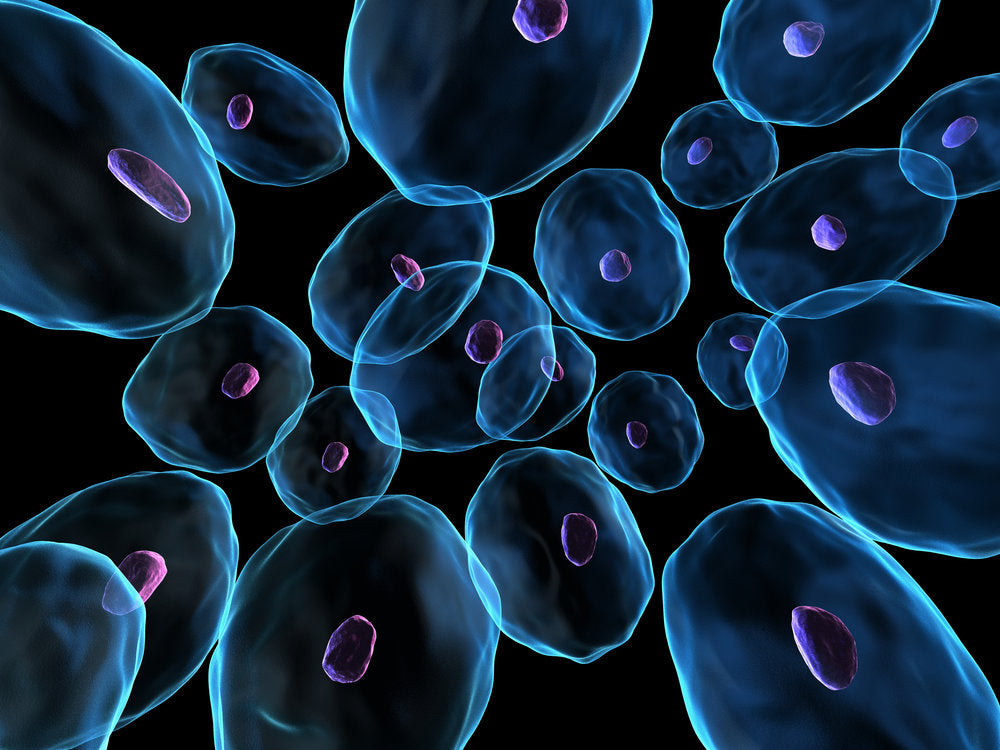A Modern Theory Of Healthy Aging
These "longevity genes" unlock caloric restriction health benefits and increase energy.

Restricting calories in order to live longer isn’t a new idea. This dietary habit has all kinds of serious health benefits ranging from delaying muscle loss to encouraging better muscular functions in older adults. There’s a lot involved in why this happens at a cellular level, but one primary reason is a relatively unknown but crucial group of “longevity genes.”
In 2000, a scientist named Su-Ju Lin discovered that when she removed a sirtuin protein from yeast, caloric restriction no longer extended lifespan. Her work laid the foundation for the next 18 years of studies surrounding this family of proteins. Papers that followed Lin’s initial findings revealed the story was more complicated than that, but overall it remained the same: sirtuins unlocked the health benefits of caloric restriction.
Don't Go Breaking My Cells (Or Do?)
Biochemical reactions are a lot like playing with Legos. They change one molecule to another, for a specific purpose in the cell. Some reactions pull two Legos apart to produce smaller, simpler molecules, whereas other types of reactions attach Legos to make more complex products. Sirtuins act like a strong set of hands, or a Lego separator (if you’re one of those people).
What makes sirtuins especially important to our health is that they perform this Lego separator job in a crucial process known as deacetylation. That word sounds complicated, but simply put it’s the process of removing acetyl groups from proteins, or de-acetylating them.
Acetyl groups are a chemical component of all cells. Sometimes acetyl groups are needed because they kick-start chemical processes within a cell, which is great when you want that reaction to happen. But you don’t need every possible chemical reaction happening at the same time. Deacetylation stops those chemical reactions from happening when you no longer need them to.
That’s why researchers suspect sirtuins may play a vital role in longevity. They decide when and how proteins access our DNA and other markers that kick-start those chemical reactions. They’re like the gatekeepers.
The Family That Deacetylates Together…
Sirtuins influence a lot of different processes in the body because they help remove acetyl groups from a lot of different proteins. There are seven different types of sirtuins, and each one is found in different quantities, in different tissues, and in different parts of the cell within those tissues. This allows sirtuins to control all kinds of processes, with multiple jobs and substrates, the details of which are sometimes a little fuzzy under the microscope. But since sirtuins are such critical mediators of caloric restriction’s beneficial effects on aging, it’s worth knowing a little bit of what they do and why they matter so much.
SIRT1: Regulator of cell death, inflammation, and metabolism
Often found in the cytoplasm and nucleus of the cell, SIRT1 proteins are best known for influencing apoptosis (the process of programming old or damaged cells to die). It does this by activating the proteins involved in apoptosis through deacetylation.
SIRT1 also makes sure cells are efficient even in their death, by activating the proteins that recycle components of dead or dying cells (autophagy). This sirtuin also becomes active to cope with inflammation, and help the mitochondria produce more cellular energy.
Out of all the sirtuin family members, SIRT1 plays a major role when it comes to the benefits of caloric restriction. It’s vital to maintaining the balance between healthy and defective skeletal muscle, and participates in the muscle injury response.

SIRT2: Controller of cellular metabolism
Also, often located in the cell’s cytoplasm and nucleus, SIRT2 is thought of as one of the main controllers of the body’s response to energy availability. It’s involved in a lot of the processes associated with metabolism, including the generation of fat cells, synthesis of lipids or fatty acids, liberation of energy from fat molecules, glucose metabolism, and insulin activity. SIRT2 also plays a role in inflammation and in regulating how the body responds to everyday oxidative stresses.
Because of SIRT2’s vital role in cellular metabolism, researchers are also looking into the role of SIRT2 in neurological health. The latest work suggests SIRT2 senses energy levels within the cell and adjusts its activation accordingly. SIRT2 activity can increase when energy is low and decrease when energy is high. That’s because it takes cellular energy to make cellular energy, so it’s best to shut off this and other metabolic processes when they’re not needed.


